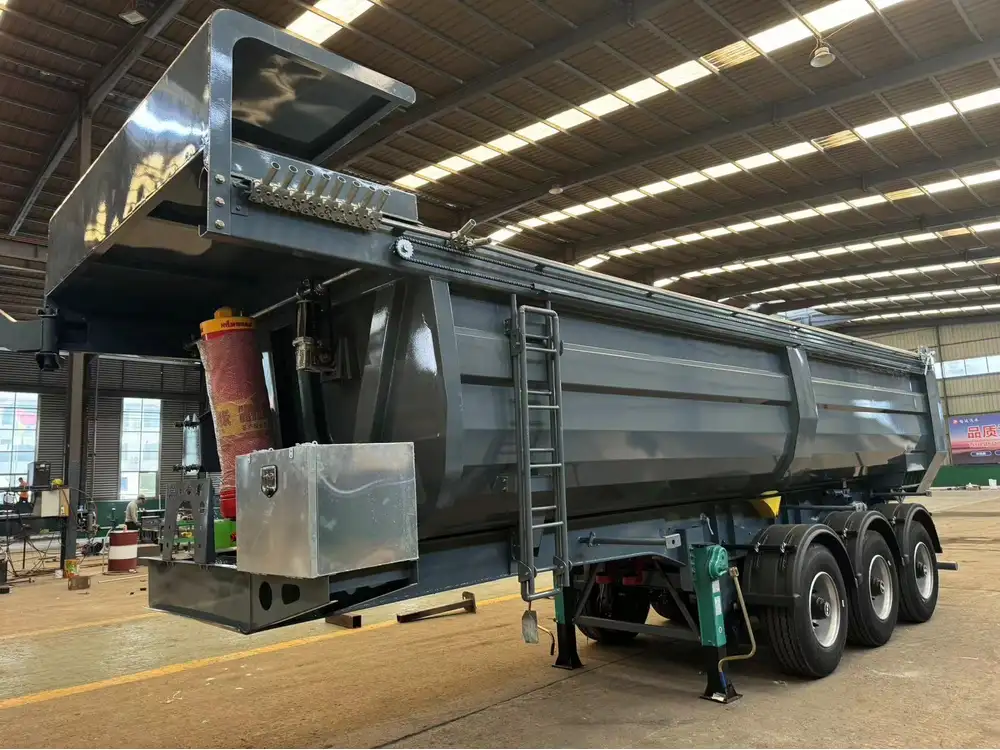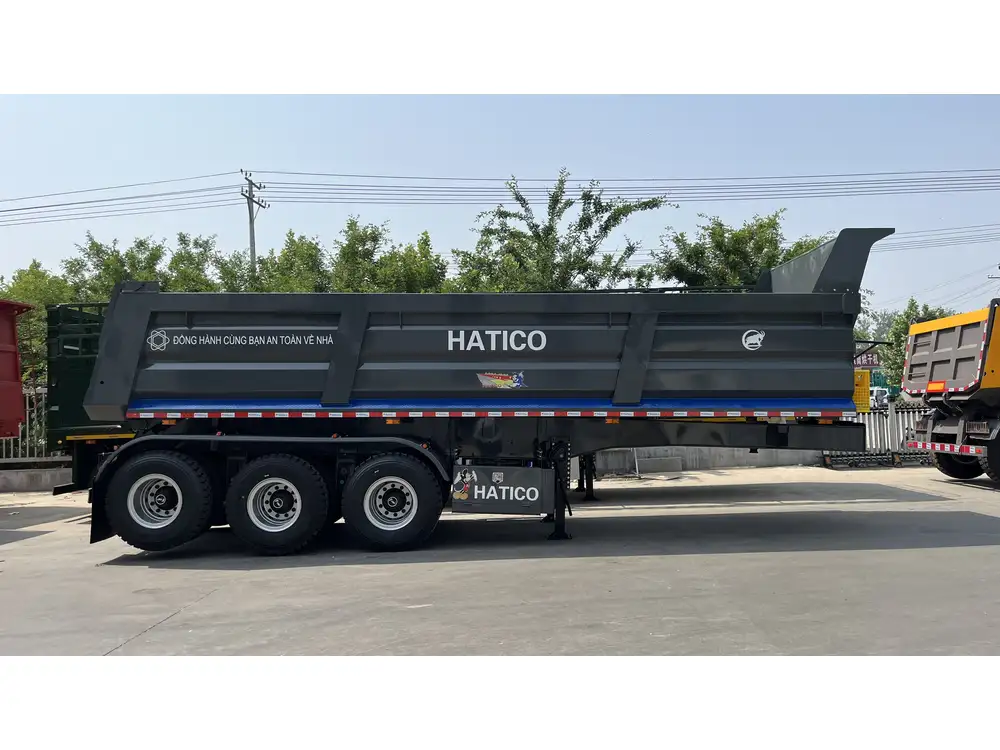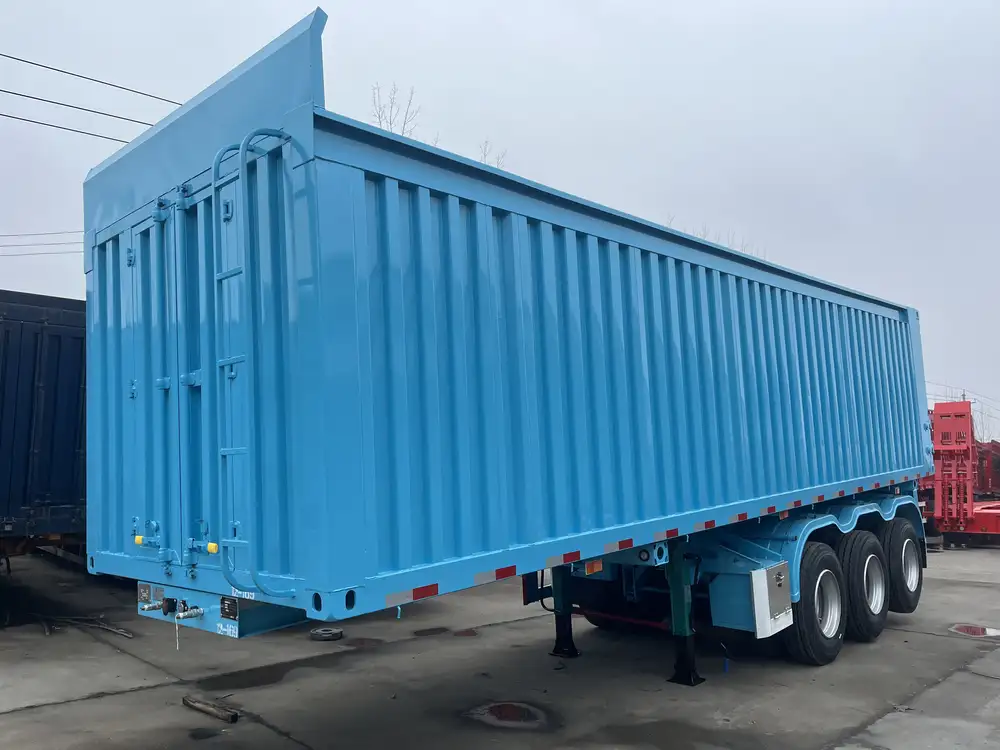When navigating the complexities of semi-trailer construction and functionality, one critical aspect that stands out is the components often colloquially referred to as the “legs.” In transportation terminology, these legs are known as landing gear, and they play a pivotal role in the stability and maneuverability of semi-trailers. This article delves into the functions, types, and features of landing gear, along with an exploration of relevant considerations for manufacturers and users in the transportation industry.
What Is Landing Gear?
Landing gear, or the legs of a semi-trailer, refers to the retractable support system located at the front end of the trailer, specifically designed to support the weight of the trailer when it is detached from the tractor unit. The primary function of landing gear is to provide stability during loading and unloading, serving as a foundation for the trailer when it is not in motion.
Key Functions of Landing Gear
Support and Stability: Ensures that the trailer remains upright and stable while stationary. The landing gear prevents tipping, especially during loading operations.
Height Adjustment: Facilitates adjustments to accommodate different heights of loading docks and cargo handling equipment. This functionality is vital for ensuring the seamless transfer of goods.
Easy Coupling and Decoupling: Landing gear supports the trailer’s front end, making it easier for drivers to couple and decouple the trailer from the tractor. This process is crucial for efficient logistics operations.

Components of Landing Gear
Landing gear systems typically comprise several components, each essential to their overall functionality:
Legs: The extendable and retractable parts that provide the necessary height adjustment. Usually made of steel for durability.
Foot Pads: Located at the bottom of the legs, foot pads provide a larger surface area for stability and are designed to prevent sinking into soft ground.
Gearbox Mechanism: The mechanism that enables the extension and retraction of the legs. This can be operated manually or through pneumatic or electric systems.
Crank Handle or Power System: Depending on the design, landing gear can be operated manually using a crank handle or through a power system for quicker deployment.
Types of Landing Gear
Landing gear systems can be broadly categorized into two main types, each with distinct features suited for specific trailer applications.
Manual Landing Gear
Manual landing gear systems rely on the physical effort of the operator to extend or retract the legs using a crank. This type is prevalent due to its simplicity and reliability. However, it requires manual labor, which can be a drawback in high-volume operations.

Advantages of Manual Landing Gear:
- Cost-Effective: Generally less expensive than power-operated systems.
- Simplicity: Fewer mechanical components mean lower maintenance needs.
Disadvantages of Manual Landing Gear:
- Labor-Intensive: Requires a driver to physically engage the mechanism, which can be tiring and time-consuming.
- Limited Speed: Slower to deploy compared to power systems, potentially impacting loading times.
Power-Operated Landing Gear
Power-operated systems utilize electric or hydraulic mechanisms to automate the extension and retraction of the landing gear. This type is increasingly popular in modern logistics due to its efficiency and ease of use.

Advantages of Power-Operated Landing Gear:
- Speed: Significantly faster than manual systems, reducing turnaround times.
- Ease of Use: Minimal physical effort required from operators, enhancing safety and reducing fatigue.
Disadvantages of Power-Operated Landing Gear:
- Higher Initial Cost: The upfront investment can be more substantial compared to manual systems.
- Maintenance: More complex systems may require specialized maintenance and repair.
Considerations When Selecting Landing Gear
When investing in landing gear, several factors should be considered to ensure optimal performance and efficiency. Manufacturers and operators need to evaluate their specific needs carefully.

Load Capacity
The load capacity of the landing gear must match the trailer’s weight and cargo specifications. It’s essential to consult manufacturer guidelines to avoid overloading and potential structural failures.
Terrain Compatibility
Consider the terrain where the semi-trailer will predominantly operate. If operating frequently on soft or uneven surfaces, selecting landing gear with wider foot pads can enhance stability and prevent sinking.
Adjustment Range
Different trailers may require varying heights for loading and unloading. Assess the adjustment range necessary to ensure compatibility with the loading facilities used.

Durability and Material Quality
High-quality materials, typically heavy-duty steel or aluminum, enhance the durability and longevity of the landing gear. Paying attention to build quality can prevent frequent replacements or repairs.
Maintenance Requirements
Evaluate how much maintenance the landing gear requires. Regular inspections should be performed for both manual and power-operated systems to ensure optimal function.
Comparative Analysis of Landing Gear Systems
Understanding the differences between the two primary types of landing gear systems can further inform your decision-making process.
| Feature | Manual Landing Gear | Power-Operated Landing Gear |
|---|---|---|
| Installation Complexity | Relatively simple to install | Requires electrical or hydraulic setup |
| Operational Speed | Slower deployment | Rapid deployment |
| User Effort | Requires manual effort | Minimal effort required |
| Cost | Lower initial investment | Higher upfront cost |
| Power Requirements | No external power needed | Requires power source |
| Maintenance | Lower maintenance | May require more specialized care |

The Future of Landing Gear Technology
As the transportation industry evolves, advancements in landing gear technology are becoming increasingly prevalent. Innovative solutions focus on enhancing user experience, safety, and efficiency.
Smart Landing Gear Systems
Emerging technologies are introducing smart systems that can be monitored and controlled via mobile applications. These systems can provide real-time feedback on weight distribution and stability, allowing operators to make informed decisions during loading and unloading.
Enhanced Safety Features
Modern landing gear systems are integrating safety features such as automatic locking mechanisms and sensors that alert operators to unsafe conditions. These features significantly reduce the risk of accidents during trailer operations.

Sustainability Considerations
As the industry gears towards sustainability, creating more environmentally friendly landing gear designs is in focus. This includes utilizing recyclable materials and improving energy efficiency in power-operated systems.
Conclusion
Understanding the essential components and functionalities of landing gear in semi-trailers is crucial for manufacturers, operators, and logistics professionals alike. By evaluating the types, features, and considerations alongside future advancements, stakeholders can make informed decisions that enhance operational efficiency and safety. Investing in the right landing gear ensures that semi-trailers can be managed effectively through diverse workloads and varied terrains, optimizing the entire logistics process.
FAQs about Semi-Trailer Landing Gear

What are the common issues with landing gear?
Common issues include mechanical failures, rust, and the need for lubrication. Regular maintenance checks can help mitigate these problems.
How do I know if my landing gear is damaged?
Signs of damage include difficulty in extending or retracting the legs, visible rust or corrosion, and misalignment. If you notice any of these, it’s advisable to conduct a thorough inspection.
Can I upgrade my manual landing gear to a power-operated system?
Yes, many manufacturers offer conversion kits to facilitate upgrading from manual to power-operated landing gear. Consult your manufacturer for specific options available for your trailer.
Understanding the dynamics of landing gear not only aids in better management of semi-trailer operations but also contributes to a safer and more efficient external transportation environment. Enhanced knowledge empowers users to make strategic decisions that benefit their logistics operations.



